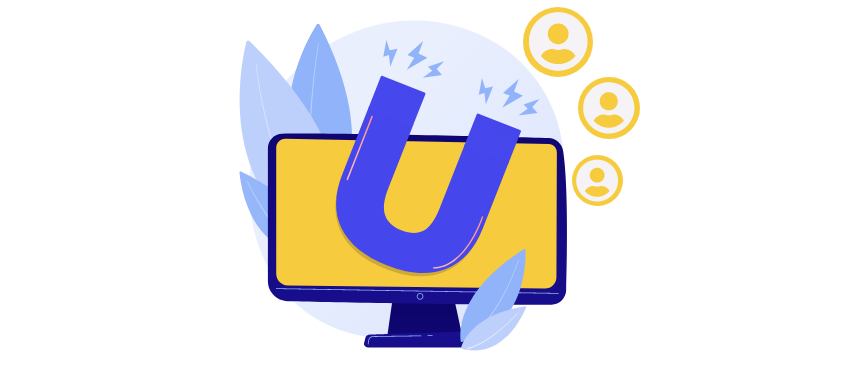What Is a Chatbot and Why Do You Need One?

What Is a Chatbot and Why Do You Need One?
What is a Chatbot?
A Chatbot is a software-programmed, conversational agent which is able to understand human text/speech inputs and respond back with a meaningful answer, in the most natural (read human) way possible.
Chatbots have the ability to simulate entire conversations with humans and the more you interact with them, the more they learn and improve.
Chatbots are integrated into almost every customer-facing web or mobile application. Google Assistant, Alexa and Siri are the most common examples of highly-efficient chatbots.
Humans converse in an unstructured manner and for computers to make sense of this; they use Natural Language Processing which is a type of Artificial Intelligence. (To gain more insights into Artificial Intelligence read this blog by clicking on the link)
NLP is the ability of computers to understand, process, and manipulate human language.
In other words, it helps a computer structure the unstructured data.
Natural Language Understanding is a critical part of NLP. NLU allows Chatbots to understand what the human speech/text language really means and allows the computer to respond back in human-understandable language.
Using NLP, the bot will understand the intent, entities, and context of the sentence. Using these linguistic techniques & algorithms, apart from intent, context and entities we can also fetch sentiments as well to understand the sentence well
A simple “Hello” or “Goodbye” to a chatbot is responded back with a greeting. This is because it’s able to interpret the intent of your “Hello” or “Goodbye” as a greeting.
A sentence like “I want to fly to Mumbai next week” is broken down as
Intent-To book Flight Tickets
Entities
Entity 1: To Location: Mumbai
Entity 2: Time: Next week (3rd March 2019)
Context: Initial or Null
Types of Chatbots
Before we discuss types of Chatbots, you should note that these chatbots that we are talking about here are all goal-oriented chatbots.
Goal-Oriented Chatbots are programmed to solve a particular business problem from a user perspective. Goal-oriented bots have sub-types based on how the user provides input and how the bot responds to it.
Goal Oriented Chatbots can be click-based and also open-ended chatbots.
Booking a Cab-based Chatbot – Here the goal is to book a cab.
Real Estate Chatbots- The goal here is to generate leads.
E-commerce-based Chatbots- The goal is to lead to more transactions in a particular category.
Chatbots can be broadly classified into different categories based on different dimensions (technology, use-case, etc). Here it has been classified into two main categories based on the user’s freedom to type:
1. Click Based Chatbots
2. Open-Ended Chatbots
Click Based Chatbots
These chatbots come with a pre-defined logic and a set of scripted scenarios/conversations. These scenarios are based on a particular problem that the Chatbot is trying to solve. They can help obtain information based on what the user clicks from the options provided to him/her.
- Booking a cab using the Uber app
- Reserving a dinner table at a restaurant using Zomato
- Booking Movie Tickets
- Using Facebook messenger to shop for Nike Sneakers
- Fast, Business-driven
- Easy-to-build and maintain
- Cost less
- Useful in the automation of tasks
- Fails miserably when the user provides additional information or unexpected inputs for which a scenario has not been designed, like, How are you?
- The workflow can be lengthy for complex use cases.
Open Ended Chatbots
Open ended chatbots deploying NLP are real conversational, AI-driven chatbots that use NLP to respond to user requests. These chatbots feel like a human talking to you.
Open-ended chatbots deploying NLP aim to enhance the chat by adding a human-like flow to a conversation.
NLP-based chatbots focus on achieving 3 key things from user input:
- Interpret
- Recognize
- Understand
NLP constituted in Open-ended Chatbots, is used to train every day with each interaction and improve the responses they provide.
NLP in open-ended chatbots could be constituted in 3 following ways:
- Named Entity Recognition
- Context
- Intent
NER enables the Chatbots for Information Extraction from a user request. They break down a sentence into specific entities and segregate these entities into categories such as Names, Places, Organizations, Time or its expression (like afternoon), Currency, Monetary value, Mathematical operators, and more.
These chatbots provide useful benefits in the fields of Personal Assistance, E-commerce, Healthcare, Finance, Fitness, and more.
“Remind me to call the ChatGen office today at 6:00 pm.”
*ChatGen* is a named entity that belongs to the category *Organization*
*Today* indicates *date*
*6:00 pm* indicates *time*
“Which is the best project?”
“What are you trying to project?”
Here the same word ‘project’ has been used differently. The first sentence refers to a project as a noun while the second one is referring to the same as a verb. Here keyword extraction would fail to recognize the difference between the meanings of the same word. In such cases, NER is successful in bringing out the difference.
Chatbots have limited or no sense of context. Context forms a crucial part of human conversations. This ability of context (in NLU) qualifies the chatbots to understand context is directly proportional to the data (vocabulary) we use to train it. This means, if we have a comprehensive training data set, the better chatbot is able to understand the variations in sentences?
“Who is Mr. Amitabh Bachchan?”
“What is his age?”
“What does he do?”
In this example by context, the chatbot is able to understand that the second or third question (where Mr. Amitabh Bachchan is referred to as his/he) has been asked in reference to the first question. So, by contextual understanding, the chatbot is able to understand the relationship between these questions.
- I want to open a savings account
- Which bank offers the highest interest rate?
By virtue of context in NLP, the chatbot is able to understand that the interest rate is asked in the context of a savings account.
Intent works on finding the meaning in a sentence. Intent (in NLP) in chatbots would classify similar sentences, based on their meaning, even though these sentences could have completely different words.
Restaurant search on a chatbot (voice assistant) can be expressed in many different ways:
- I’m hungry!
- Show me good pizza spots.
- I want to take my boyfriend out for some sushi!
Consider these sentences which all have different words but have the same meaning. NER will not be able to understand the differences, but the intent in NLU enables us to understand this.
RAM of the best phone.
Best RAM phones.
The first statement asks about the RAM details of the best phone, while the second one refers to a list of phones with the best RAM. Both sentences have different intent. The first one refers to value intent and the second one refers to list intent.
- Limitless functionality
- Flexibility
- More human-like
- Yet to get a deeper understanding of human emotions and accurately simulate Contextual conversations
- Difficult to build and maintain
- High Cost and Time to market
- The risk of failure is high
- Business Applications of Chatbots
- All types of businesses can benefit from Chatbots, especially in Marketing, Sales, and Lead generation.
Product suggestions- Brands such as Sephora and H&M use chatbots to provide product reviews and product suggestions based on previous purchases made by the user.
24 x 7 Customer Service- Focus on customer service and engagement has never been more critical than today. With chatbots, you can automate Responses to user queries on websites and apps. This is a huge step to increase Customer Retention and reduce manpower.
Personalized Marketing- By identifying customer habits, the chatbot can learn about user behavior and carefully provide targeted ads specific to the user. (Example- Amazon)
Cart Management- A user may add products to their cart and often forget about it. Chatbots send timely notifications to remind users and promote Sales. (Example- Lens kart)
Health Industry- Casper, a leading mattress manufacturer has developed a bot that talks to patients suffering from Insomnia.
Finance and News Industry- Chatbots integrated with apps provide the latest updates on Stock trends, News, Weather, and Politics.
Transport, Tourism, and Hospitality- Chatbots in elite hotels and restaurants assist users in ordering meals and requesting room service based on certain user-specific choices. (Example- items from the menu for a user who’s allergic to mushrooms)
With each passing day, it seems we’re only improving and getting closer to realizing the prowess of AI/ML/NLP/NLU. Movies such as Her and Ex Machina don’t seem so impossible!
We at ChatGen take pride in building advanced #Chatbots for business organizations that are equipped with features such as automatic scheduling, intelligent routing, extensive analytics, CRM integration, and a host of other features.
We have an experienced team of IITs, IIM, and experts from E-commerce. Till now we have delivered numerous chatbots in the marketplace to reputed organizations such as Eureka Forbes, Tata Value home loans, Thyrocare, and many more.
Visit chatgen.ai to know more about Chatbots or Build One for your Business!
#ArtificialIntelligenceBots #Chatbots #ChatbotsInMarketingAndSalesMarketing #Automation #SalesAutomation










